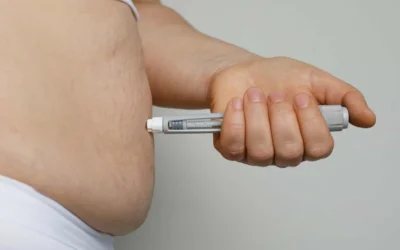Over the past decade, more people are questioning their drinking habits—not because they’ve hit “rock bottom,” but because they want to feel better, think more clearly, and live more intentionally. Enter the sober curious movement, a growing cultural shift that invites people to examine how alcohol fits into their life, without pressure to quit forever or adopt the label of “alcoholic.”
The rise of “dry months” like Dry January or Sober October reflects this trend. These periods of voluntary abstinence give people space to evaluate how alcohol impacts their sleep, energy, focus, mood, and relationships. For many, it’s eye-opening.
How Did We Get Here?
Over the last 20 to 30 years, alcohol has become deeply woven into our social fabric. From happy hour to book club to mimosa-fueled brunch, drinking is not only normalized—it’s often expected. Alcohol has been marketed as the ultimate reward, stress relief, or badge of adulthood, especially to women. Phrases like “mommy juice,” “rosé all day,” or “it’s wine o’clock somewhere” are more than cheeky—they reflect a culture that has made daily drinking feel harmless, even healthy.
But for many people, this “normal” drinking slowly drifts into patterns that aren’t serving them. You don’t have to drink excessively to notice that alcohol may be stealing more than it’s giving.
Warning Signs Your Drinking May Be Affecting Your Health
You don’t need to meet criteria for alcohol use disorder to benefit from a reset. Some subtle signs that alcohol might be impacting your wellbeing include:
- Feeling like you need a drink to unwind or socialize
- Drinking more days than not
- Difficulty sticking to “just one”
- Trouble sleeping or waking up at 3 a.m.
- Low energy or brain fog
- Digestive issues
- Increased anxiety or depressed mood
- Guilt or shame about how much you’re drinking
These are all valid reasons to explore a break from alcohol, even temporarily.
The Hidden Risks of “Moderate” Drinking
Alcohol is often portrayed as safe in moderation, but recent research shows even moderate intake carries risks, including:
- Liver inflammation and fat accumulation (non-alcoholic fatty liver disease or alcoholic hepatitis)
- Elevated cholesterol and blood pressure
- Increased risk of several cancers (especially breast and colon cancer)
- Impaired sleep, memory, and cognitive performance
- Nutrient deficiencies, particularly B12, folate, and magnesium
- Disrupted hormone balance, particularly in women in midlife
Alcohol also affects the liver’s ability to convert thyroid hormones, clear excess estrogen, and metabolize medications.
What Does “Sober Curious” Mean?
Being sober curious doesn’t mean swearing off alcohol forever. It means:
- Asking: Why am I drinking right now?
- Being mindful of how alcohol affects your body, emotions, and goals
- Exploring socializing, relaxing, and celebrating without alcohol
- Creating space to feel better, physically and emotionally
This movement gives permission to pause, reassess, and reset, without judgment or labels.
Great-Tasting Mocktails to Try
Non-alcoholic doesn’t mean boring. Here are some easy and delicious mocktails that feel adult, refreshing, and satisfying:
Grapefruit Rosemary Spritzer
Fresh grapefruit juice, sparkling water, a sprig of rosemary, and a pinch of sea salt. Optional: add a splash of Seedlip Grove 42 for complexity.
Cucumber Mint Cooler
Muddled cucumber and mint with lime juice, elderflower syrup, and sparkling water.
Spicy Ginger Lime Mule
Ginger beer (non-alcoholic), lime juice, mint, and a tiny dash of cayenne.
Berry Basil Smash
Muddled blackberries and basil, lemon juice, sparkling water, and a splash of pomegranate juice.
No-Groni (Non-Alcoholic Negroni)
Mix a non-alcoholic aperitif like Ghia or Lyre’s Italian Orange with NA vermouth and NA gin. Serve over ice with an orange peel.
You can also try ready-made options like De Soi, Ghia, Kin Euphorics, Seedlip, Ritual, and Lyre’s.
Online Resources for the Sober Curious
You’re not alone. Here are some supportive tools, communities, and reading for anyone exploring a new relationship with alcohol:
Websites and Communities
This Naked Mind
Science-backed approach to changing your relationship with alcohol. Offers a book, podcast, and free resources.
Soberish
A relatable, no-pressure blog and newsletter for cutting back or quitting without shame.
Club Soda
Courses, events, and a community focused on mindful drinking.
Apps to Support Your Journey
Reframe
Uses neuroscience and daily coaching to help you reduce or quit drinking without labels or judgment.
I Am Sober
A sobriety tracker and journaling tool with a built-in support community.
Headspace or Calm
Help manage stress and improve sleep—two key triggers for habitual drinking.
Final Thoughts
You don’t have to hit bottom to want better. Whether you’re trying out Dry January, taking a break for health reasons, or just curious about what life might look like with less alcohol, know that there’s a path for you. One with better sleep, better energy, clearer thinking—and no hangovers.
Want help navigating this reset with expert support? Our practice offers evidence-based, judgment-free care to help you optimize your health, hormones, and habits. Reach out anytime to learn more.
Frequently Asked Questions
Can I eat whatever I want during OMAD?
Are there any side effects?
Possible initial issues:
- Fatigue
- Hunger
- Headaches Irritability
- These usually fade as your body adapts.
How many calories should I eat in my one meal?
Enough to meet your needs — typically:
- Men: 1800–2500 kcal
- Women: 1400–2000 kcal
- Use a TDEE calculator to estimate your requirement.

